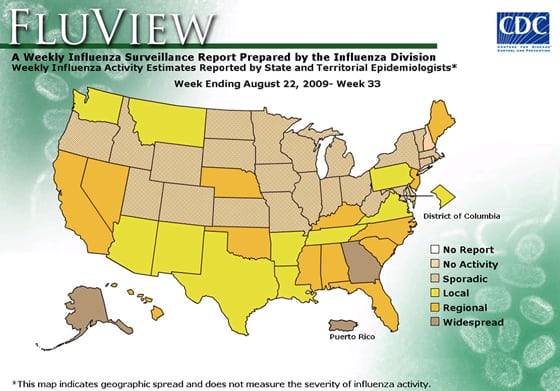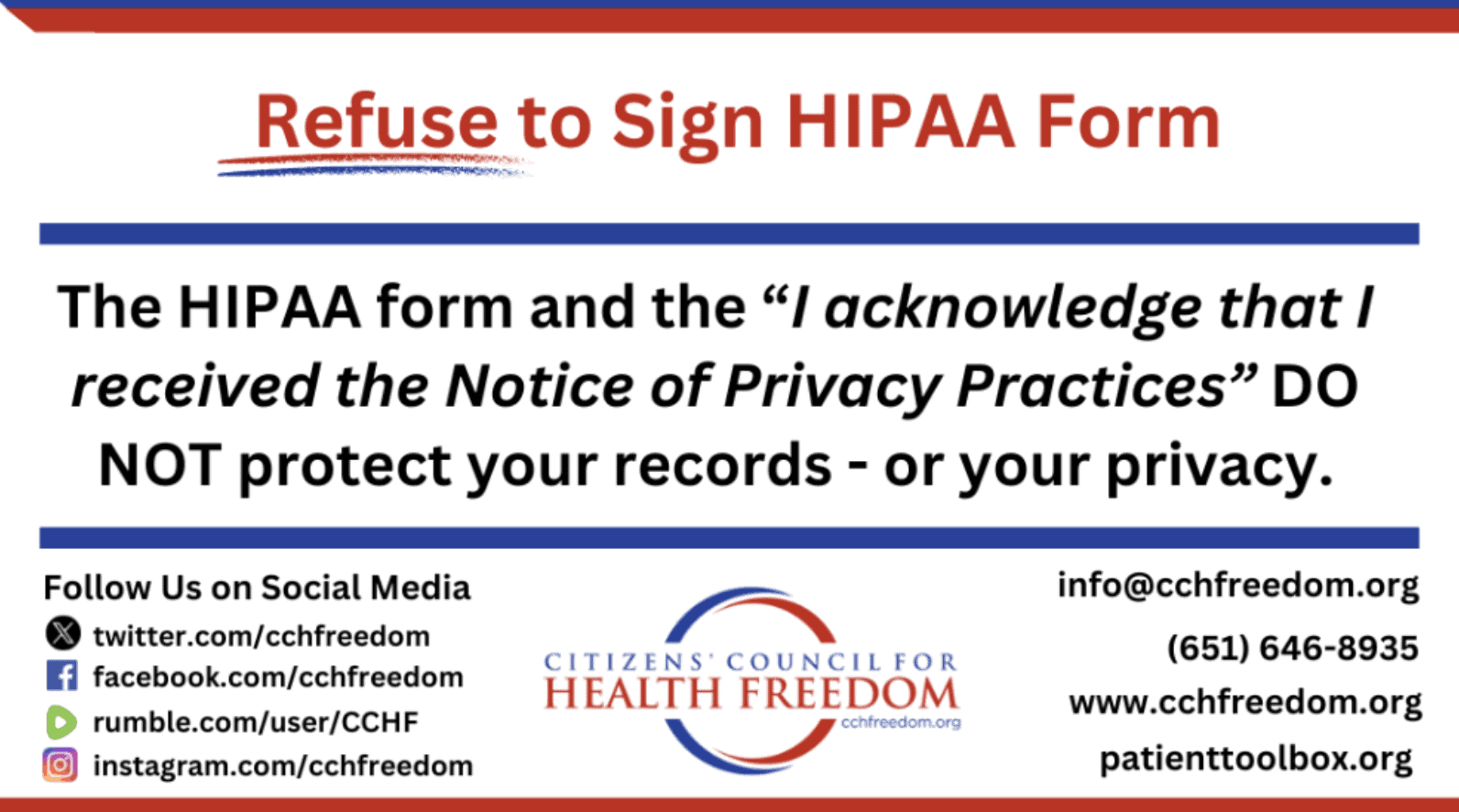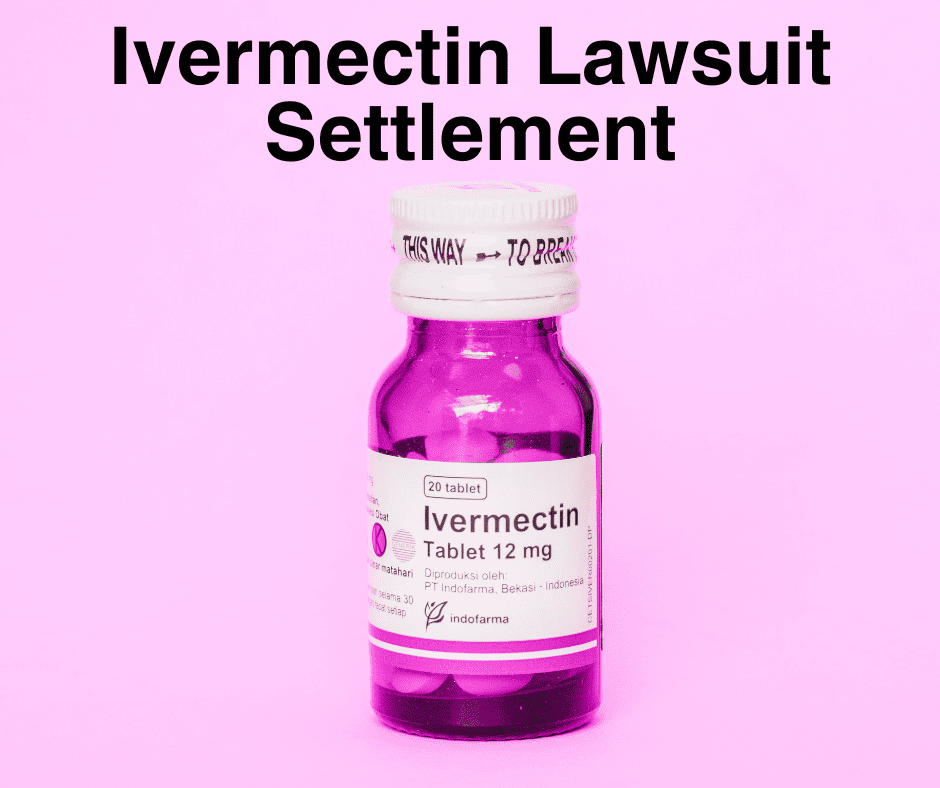Novel H1N1 Flu Situation Update

Centers for Disease Control and Prevention: H1N1 Flu Situation Update
ModernHealthcare.com: H1N1 a ‘Serious Threat,’ Presidential Panel Warns
“As the fall flu season approaches, the 2009 H1N1 virus is unlikely to mirror the deadly pandemic of 1918-19, but still ‘poses a serious threat’ to the country, according to a new report from a presidential advisory committee of scientists from industry and academia.”)
“…a new article in the journal Emerging Health Threats found that participants in 11 Canadian focus groups in 2006-07 were hesitant to use novel vaccines for various reasons, including uncertainty surrounding new vaccines and “concern that unsafe pharmaceuticals may be rushed to market during a health crisis.”
Government H1N1 Flu Information-www.pandemicflu.
Vaccination Facts and Information
Doctors ordered to stop giving flu jabs to children, The Telegraph, January 2011
“Health officials have ordered doctors to shelve a vaccination programme which was under way to protect children from swine flu.”
Weighing Possible H1N1 Vaccine Risks, CBS News, August 17, 2009
“The risk of death from H1N1, Ashton said, is roughly 1 in 1000 people. She said you should weigh that risk against getting vaccinate, which, however safe the vaccine may be, the risk is never zero.”
Swine Flu Cases Overestimated? – CBS News, October 21, 2009
In late July, the CDC abruptly advised states to stop testing for H1N1 flu, and stopped counting individual cases. The rationale given for the CDC guidance to forego testing and tracking individual cases was: why waste resources testing for H1N1 flu when the government has already confirmed there’s an epidemic?
Some public health officials privately disagreed with the decision to stop testing and counting, telling CBS News that continued tracking of this new and possibly changing virus was important because H1N1 has a different epidemiology, affects younger people more than seasonal flu and has been shown to have a higher case fatality rate than other flu virus strains.
Swine Flu Numbers Inflated, New American, October 22, 2009
“The CDC refused to release the data that had already been collected from states and e-mail communications regarding the decision to advise against testing, even two months after a Freedom of Information Act request by CBS. It also refused to comment for the investigation. But the news outlet managed to contact all 50 states and get their information.
“The results reveal a pattern that surprised a number of health care professionals we consulted,” the report said. It claims that since most cases of swine flu are now diagnosed based on risk factors and symptoms, the “epidemic” may be exaggerated. The vast majority of cases flagged as probable H1N1 did not even test positive for any influenza at all, according to the states’ data.”
Swine Flu Vaccine Trial Seeks Volunteers, September 1, 2009 – San Francisco Chronicle
“The Food and Drug Administration approved the new swine flu vaccine Tuesday, a long-anticipated step as the government works to start mass vaccinations next month. Limited supplies should start trickling out the first week of October _ about a week earlier than expected, Health and Human Services Secretary Kathleen Sebelius told Congress. Then about 45 million doses should arrive around Oct. 15, followed by more shipments each week.
“She said they’ll be available at up to 90,000 sites, including schools and clinics, across the U.S. that state health departments have chosen as best at getting the shots out fast.
“The government has ordered 195 million doses but may order more if there’s enough demand, she said….
“The new swine flu seems no more deadly than regular winter flu, which every year kills 36,000 Americans and hospitalizes 200,000. But there’s an important difference: This H1N1 strain sickens younger people more frequently than the people over 65 who are the main victims of seasonal flu
Pandemic Flu: Problem and Solution (VaccineRights.com)
“The Problem: Potentially harmful, fast-tracked, uninsurable H1N1flu vaccines may be mandated in an emergency context that may not allow philosophical and religious exemptions, and those who refuse the vaccine may be subject to quarantine, potentially in a government facility, depending on individual state laws and the discretion of public health officials.
The Solution: The right to make informed choices is severely limited by current laws. To change this, we must take steps to enact new policy and law that allows citizens to refuse vaccines for themselves and their children; to use self-quarantine and self-isolate at home, should quarantine or isolation be deemed necessary by public health officials; and to prevent our kids from being kept out of school based on their vaccination status only.”
Swine flu shots at school: Bracing for fall return – Associated Press
Legal Immunity Set for Swine Flu Vaccine Makers – Associated Press
Swine Flu Vaccine Will Need Compensation Program
Reflections on the 1976 Swine Flu Vaccination Program – CDC
Safety of Swine Flu Vaccine to Face Tough Scrutiny – Forbes
Overuse of Vaccines, Anti-Flu Drugs May Result in Human Calamity – Lew Rockwell.com
Direct links to Rockwell citations
Man-Made Virus?
‘Swine Flu’ Possibly Man-Made (D.C. Examiner, May 14, 2009)
Tamiflu Developer: Swine Flu Could Have Come From Bio-Experiment Lab (ABC-TV News, May 14, 2009)
“…the [NIAID-supported] research team was able to reconstruct the three-dimensional structure of the 1918 virus’ HA antigen, the viral protein that binds to a host’s receptors, by piecing together gene fragments from victims’ preserved lung tissue. Once the gene was assembled, the protein that the gene encodes could also be constructed, taking shape as microscopic protein crystals.” [emphasis added]









April is “Truth About HIPAA” Month!